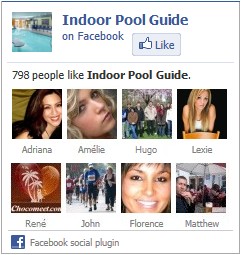
Water disinfection solutions
Disinfection occurs when sanitation of the pool water is achieved. This means that transmission of infections between persons or from the pool is minimised and that growth of algae and other nuisance organisms is inhibited.
Chlorine and Bromine Based Disinfectants
Disinfectants need to kill bacteria very quickly, and free chlorine or bromine are the most effective treatments available that can be safely used in swimming pools. These disinfectants have another advantage because they also oxidise bather wastes, such as sweat, skin particles, mucus and urine in the pool water.
Chlorine and bromine based disinfectants are the only disinfectants suitable for use in public pools as their levels can be established on-site with relatively simple test kits.
Ozone or UV Treatments
Disinfectants should be of a residual nature and be present in the main pool water body to encounter microorganisms as they are introduced to the water. Off-line treatment systems, such as ozone or UV, are not regarded as disinfection systems alone, as neither can prevent person-to-person transmission of disease, nor sanitise pool surfaces.
Ozone is excellent for oxidation and destruction of chemical pollutants or disinfection by-products within the circulation and filtration plant. UV has been shown to be beneficial in the breakdown of chloramines.
Other Disinfection Treatments
There are other disinfectant systems that are marketed in Australia, which involve the use of mechanical or other chemical methods. These systems generally have no application to public pools and should be avoided. If in doubt contact the regulatory authority for advice.
Best Practice Model
– Design disinfectant dosing systems for all pools to cope with a range of bathing loadings.
– Use automatic monitoring and dosing of disinfectant and pH in all spa pools and other pools that are subject to inconsistent chlorine demand.
– Maintain disinfectant residuals at the lowest end of the regulatory scale, where possible. Pools with poor circulation rates or dosing systems may need to maintain higher residual levels to accommodate demand from the influx of pool users.
– Ensure that cyanuric acid is present in all outdoor pools to minimise chlorine loss to sunlight.
– Conduct superchlorination at least weekly to disinfect filters, control algae and oxidise bather pollution.
– Maintain a stable pH when using automatically controlled disinfectant dosing to avoid fluctuations in disinfectant levels.
– Dilution reduces bather pollution, disinfection by-products, excessive TDS and cyanuric acid build-up.
Choosing a Suitable Disinfectant
Type of Pool
The type of disinfectant chosen depends on these factors:
– Indoor or outdoor situation
– Swimming pool or spa pool
– The chemical characteristics of the water supply
– The bather loadings that have to be treated
– Circulation capacity and pool design
– Chemical handling and safety issues
– Supervision and maintenance issues
– Pool water temperature.
Chlorine Based Chemicals
Chlorine based chemicals available include:
– Elemental chlorine gas
– Liquid chlorine (sodium hypochlorite)
– Granular chlorine (calcium and lithium hypochlorite)
– Chlorine tablets (calcium hypochlorite)
– Electrolytic generation of chlorine from saline salt (salt chlorination)
– Stabilised chlorine granules/tablets (dichloroisocyanurate and trichloroisocyanurate).
Bromine Based Chemicals
Bromine based chemicals available include:
– Tablet (BCDMH)
– Sodium bromide with an activator (hypochlorite or ozone).

